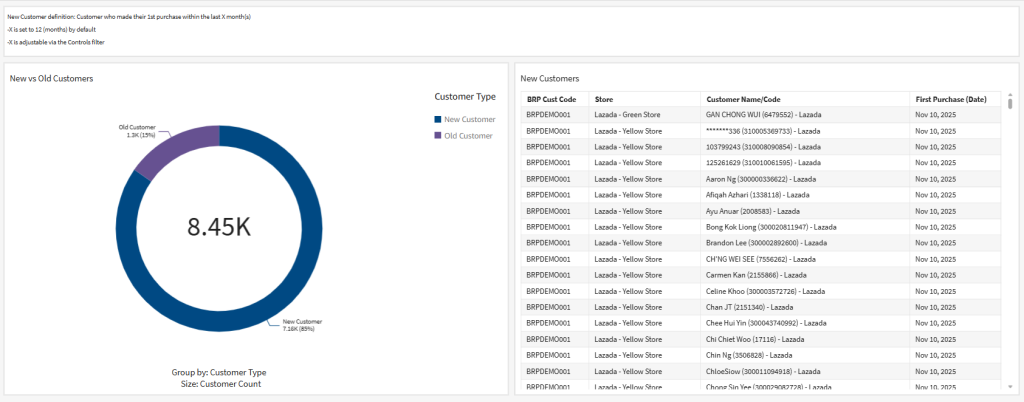Every cent counts in e-commerce. Every ringgit you save is either profit in your pocket or fuel to reinvest in growing your business.
And sometimes, the most profitable insights come from the numbers you least expect.
Here’s a story from a small but growing e-commerce brand — let’s call them Brand X — that illustrates exactly that.
Who is Brand X?
Brand X is a home-grown skincare brand selling masks, serums, and daily care kits on Shopee and Lazada. Founded by two friends from a small home office, the brand had been growing steadily for six months.
- Monthly revenue: RM50K – RM60K
- Team size: 2 founders + 1 part-time assistant
- Challenge: Competing with bigger brands, so they leaned heavily on vouchers and discounts to attract buyers
Everything looked good on the surface. Sales were climbing, ads were running smoothly, and customer reviews were positive.
But behind the scenes, the founders noticed something worrying: the profit wasn’t matching the sales numbers.
Step 1: Suspicion
At the end of one month, Brand X reviewed their bank account and sales reports.
- Sales revenue: RM57,000
- Estimated profit: RM15,000
- Actual profit after calculating all fees: RM3,000
Something wasn’t adding up.
“We were so focused on growing revenue, we didn’t realize some of our promotions were actually costing us money,” said the Marketing Lead of Brand X.
Step 2: Investigation
The founders decided to dig deeper using BRP Analytics, looking at sales, vouchers, shipping, and platform fees per SKU.
They noticed two surprising trends:
- The “top seller” was a money loser
- Best-selling product: 500-unit Face Mask Kit
- Selling price: RM50/unit
- Discounts/vouchers applied: RM10/unit
- Platform fees: RM5/unit
- Shipping: RM8/unit
- Net profit per unit: RM50 – (10+5+8) = RM27 (gross) → after other hidden costs, actually losing RM5/unit
- A quiet product was the real profit driver
- Product: Hydrating Serum (barely promoted)
- 200 units sold
- Minimal vouchers applied
- Profit per unit: RM15/unit
- Net contribution to profit: RM3,000
By running the numbers for every SKU, they realized that voucher-related losses across all products added up to RM12,000.
Step 3: Taking Action
Armed with this insight, Brand X made a few changes:
- Revamped their voucher strategy
- Only applied vouchers to products with healthy margins
- Limited high-discount campaigns on top-selling but low-margin SKUs
- Focused on profit-driving products
- Promoted the Hydrating Serum more aggressively
- Reduced ad spend on “loss-making” products
- Tracked every promotion’s ROI
- BRP Analytics now included profit-per-SKU dashboards as a weekly check
- BRP Analytics now included profit-per-SKU dashboards as a weekly check
Step 4: Results
Within two months:
- Losses from vouchers were nearly eliminated
- Net profit increased by RM10K – RM12K without increasing sales volume
- Freed-up cash was reinvested in targeted ads and new inventory
But the most eye-opening part came from tracking their customer base growth in BRP Analytics.
Using the “New vs Old Customers” dashboard (screenshot below), Brand X noticed that 85% of their recent sales came from new buyers, proving that their revised voucher strategy was attracting profitable new customers rather than just discount-hunters returning for deals.
This gave the team a clear signal: the brand was growing in the right direction sustainably.
“Seeing it all laid out in the dashboard was a game changer. It wasn’t about selling more — it was about selling smarter,” said Brand X’s founder.

Key Takeaways for E-Commerce Sellers
- High sales don’t always mean high profit. Check the numbers behind every promotion.
- Vouchers and discounts can quietly drain your profits. Analyze cost per SKU, including fees and shipping.
- Small leaks add up. RM12K didn’t come from one big mistake. It came from dozens of small orders across multiple SKUs.
- Use data tools like BRP Analytics. A clear view of revenue, costs, and profit per SKU makes decision-making easier.
Every cent you save can either be taken as profit or reinvested to grow your business. And in e-commerce, spotting those hidden leaks is often the difference between struggling and thriving.
Want to find revenue opportunities in your e-Commerce data?
Book a free strategy session and we’ll show you how to drive more revenue from your e-Commerce store.



Leave A Comment